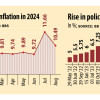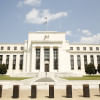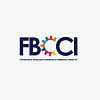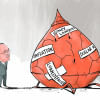Is negative interest rate a recipe for disaster?

Imagine paying interest to save money. A bizarre idea that was once theoretical curiosity is now a stark reality in several economies of the developed world: Sweden, Denmark, Switzerland, the Euro Area countries and Japan. Central banks in these economies – which represent more than 25 percent of global GDP - have been charging interest on excess reserves it receives from commercial banks and pushing target for key policy rates below zero. Negative interest rates were introduced to fight persistent deflationary threats, stimulate economic activity and (in the case of Denmark and Switzerland) deter capital inflows and exchange rate appreciation. In theory, negative rates should work similar to conventional monetary expansion with an added punch for banks to seek out riskier investment opportunities. But the unorthodox nature of the policy has sparked off considerable anxiety and criticism from various fronts. Financial sector specialists are labelling it as 'Death of Banks', 'High-risk experiment' and the 'stage for the next crisis'. So will negative rates take these economies to the brink of disaster or are we looking too far ahead without assessing likelihood of risks, cost-minimising strategies and potential benefits of this policy?
The advent of negative rates did intensify financial market volatility in Europe. Volume of activity in short-term money market instruments fell; bank stocks tumbled. Detractors argue that banks either risk stability of their retail funding base (by imposing negative deposit rates) or sacrifice profitability through reduced interest rate spread (by only lowering lending rate). Yet, the idea of losing retail depositors is not entirely convincing. In a digitised era and low interest rate environment, physically storing and moving large amounts of cash is costly. Marginally negative deposit rate does not seem strong enough incentive for people to haul their money out of banks when their alternatives are unattractive as well. Note that average bank deposit rate in Switzerland has fallen below zero since early 2015. Yet year-on-year growth of currency in circulation remains subdued relative to historical standards, suggesting savers have not switched to cash. This evidence notwithstanding, banks in Portugal, UK, Italy, France, Denmark, Norway, Finland and the aggregate Euro Area are charging - on average – household deposit rates above 0.5 percent, as of December 2015 (Source: Economist Intelligence Unit). Meaning these economies have some room to take down deposit rates within positive territory – reviving net interest margin without threatening funding base.
That said, profitability of banks is also affected due to negative interest on excess reserves. This effect is partially mitigated by central banks' policy of charging negative rates only above certain thresholds. For instance, in Switzerland, the threshold is 20 times a bank's minimum reserve requirement. In Japan, negative rates have been imposed only on new excess reserves accumulated after the policy announcement and not on preexisting levels. Also worth mentioning is that bank profits have languished in recent years due to high non-performing loans. NPL as percent of total gross loans in Italy, Portugal, Ireland, Cyprus and Greece stand at 17.3, 12.3, 18.8, 44.8 and 34.4 respectively, as of 2015 (Source: World Bank). It is challenging for new loans to flow into the economy until banks clean their balance sheets. If anything, lower rates are favourable to that cause. Negative (or low) interest rate reduces odds of an increase in non-performing loans (NPL) by lowering cost of capital for business.
It should come as no surprise that bond markets in these advanced economies have swiftly reacted to negative rates. Five-year bond yields in Switzerland, Belgium, Austria, Netherlands, Finland, Germany and Japan have turned negative in the last few months (Source: Bloomberg LP). An analysis by the Financial Times suggests that interest savings on new debt issued by the Japanese government since January, 2016 (when negative rates were introduced) is already above USD 700 million annually. These benefits will continue to rise as governments refinance their existing debt. To be sure, there are two sides to that story – someone on the other end will earn less interest. But it is fair to say that the net effect is positive given that money saved by the government is used for productive expenditure. Not to mention that existing bond holders – banks, non-financial corporations and individuals – generate capital gain due to lower policy rates.
Another benefit accruing to these countries is through the exchange rate channel since their currencies have depreciated (or appreciated less), supporting trade flows. The Euro and Danish Krone depreciated by around 18 and 14 percent respectively since June and September 2014, when each central bank pushed rates below zero. Small wonder that both economies experienced higher export growth in 2015 compared to the previous two years (Source: Haver Analytics, Bloomberg LP).
It goes without saying that the exchange rate channel also has implications for developing countries. For those who also devalued their currencies in recent times, adverse effect on trade will be limited. Some developing economies could also see additional inflow of capital through bond markets as investors move away from negative-yielding debt in Europe and Japan. This additional inflow could moderate negative impact on capital flows to developing countries when the U.S. continues its monetary tightening cycle. This is especially important given that these economies need external sources of capital to finance public investment.
Make no mistake; these points are not made to suggest negative interest rate is a silver bullet. It is true that taking policy rates substantially deeper into negative territory may reveal greater costs and vulnerabilities. But is negative interest rate only a story of doom and gloom, as some critiques suggest? The short answer is no. At existing levels, or even after another 10-25 basis point rate cut, describing it almost as a harbinger of death seems a touch unwarranted.
The writer currently works as a Macroeconomic Analyst for an organisation in Washington D.C. He is a Fellow for the Asian Center for Development in Dhaka.
Email: [email protected]

 For all latest news, follow The Daily Star's Google News channel.
For all latest news, follow The Daily Star's Google News channel. 








Comments